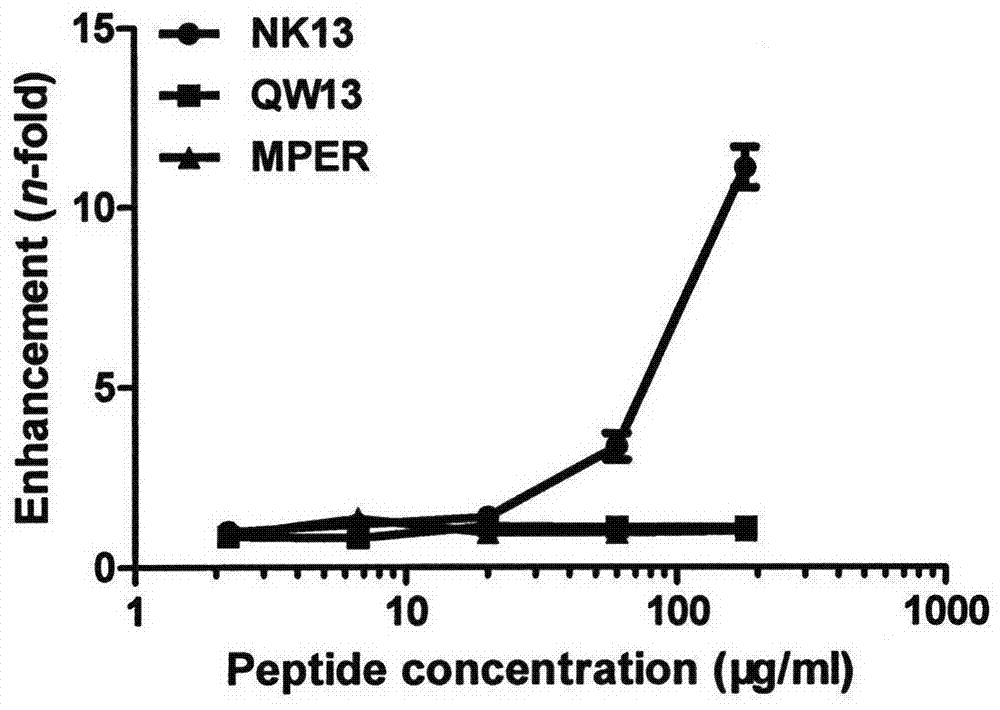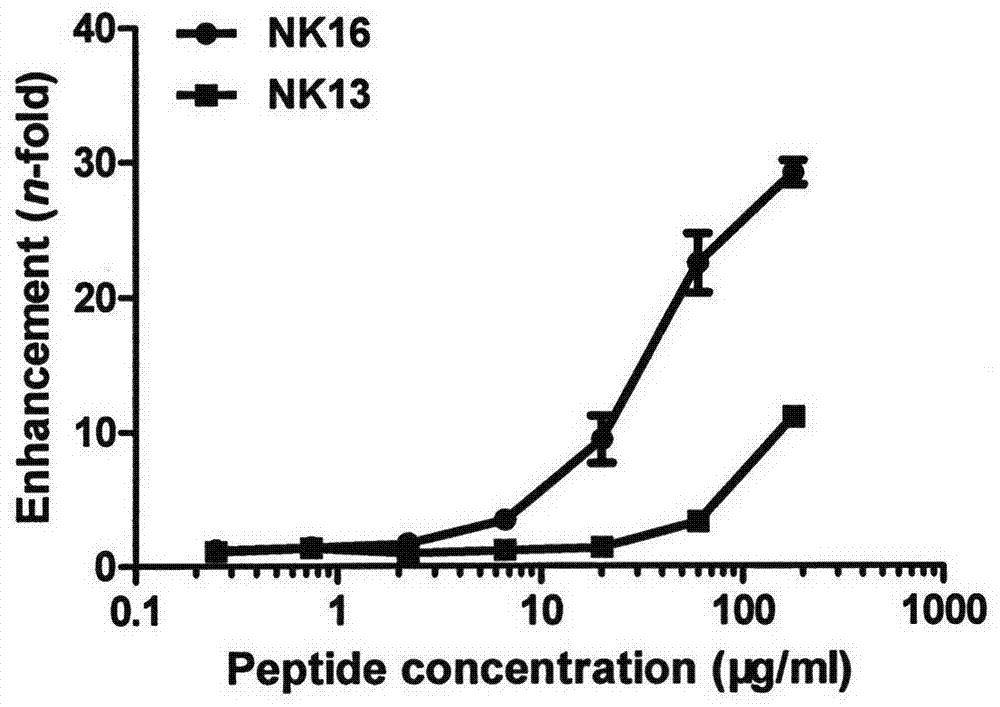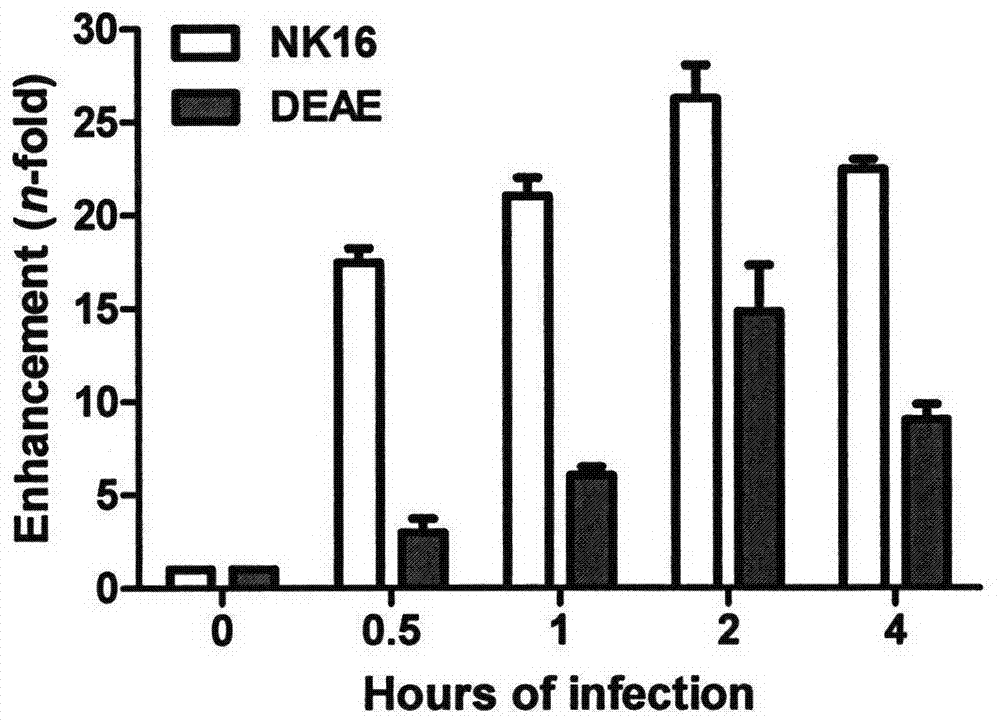A kind of polypeptide pro-infection agent
A reagent and sequence technology, applied in the fields of peptides, genetic material components, gene therapy, etc., can solve the problem of low infection efficiency of lentiviral vector system
- Summary
- Abstract
- Description
- Claims
- Application Information
AI Technical Summary
Problems solved by technology
Method used
Image
Examples
Embodiment 1
[0019] Peptide Design
[0020] Table 1
[0021]
[0022] Characterization of pro-infectious activity
[0023] figure 1 Comparison of pro-infection activities of MPER, NK13 and QW13.
Embodiment 2
[0025] Peptide Design
[0026] Table 2
[0027] name describe sequence sequence listing NK13 C-terminal polypeptide of MPER region Ac-NWFDITNWLWYIK SEQ ID NO:1 NK16 NK13-derived peptides Ac-NWFDITNWLWYIKKKK SEQ ID NO:2
[0028] Characterization of pro-infectious activity
[0029] figure 2 Comparison of pro-infection activities of NK16 and NK13.
[0030] Compared with the activity of commonly used pro-infection reagents
[0031] image 3 Comparison of the pro-infection activity of NK16 and DEAE dextran at different infection times.
[0032] Application to other enveloped virus infections
[0033] Figure 4 GFP fluorescence flow cytometric analysis of Hela cells infected with FIV / VSV-G.
Embodiment 3
[0035] Figure 5 Pro-infection activity of NK16 under different ionic strength conditions.
[0036] Image 6 Pro-infection activity of NK16 at different pH conditions.
PUM
 Login to View More
Login to View More Abstract
Description
Claims
Application Information
 Login to View More
Login to View More - R&D
- Intellectual Property
- Life Sciences
- Materials
- Tech Scout
- Unparalleled Data Quality
- Higher Quality Content
- 60% Fewer Hallucinations
Browse by: Latest US Patents, China's latest patents, Technical Efficacy Thesaurus, Application Domain, Technology Topic, Popular Technical Reports.
© 2025 PatSnap. All rights reserved.Legal|Privacy policy|Modern Slavery Act Transparency Statement|Sitemap|About US| Contact US: help@patsnap.com



